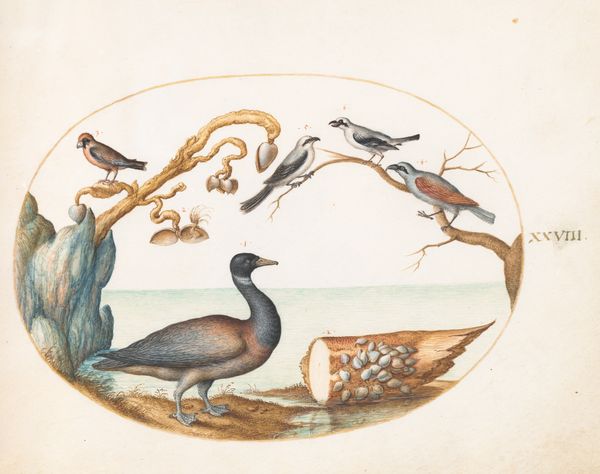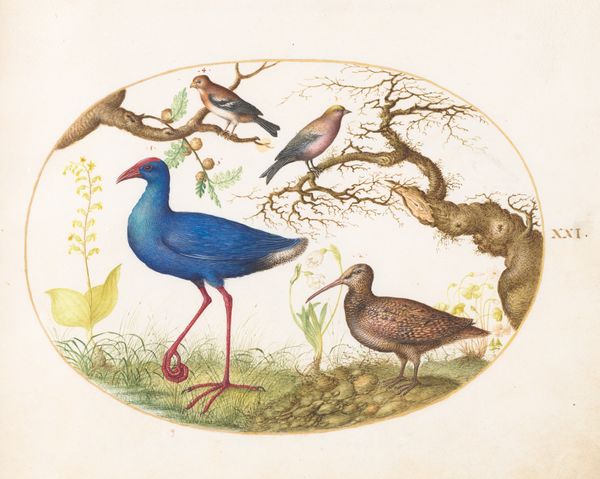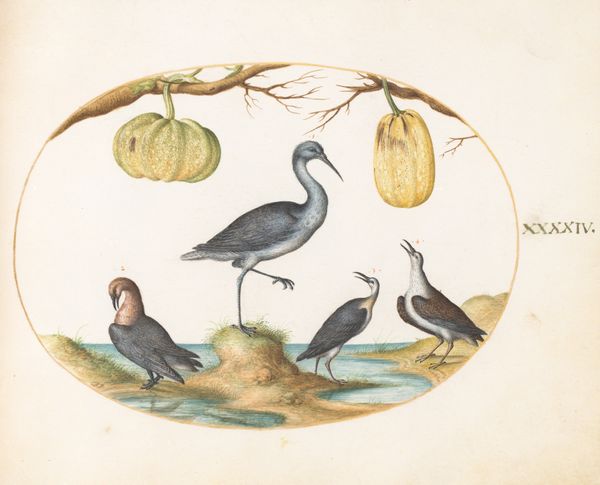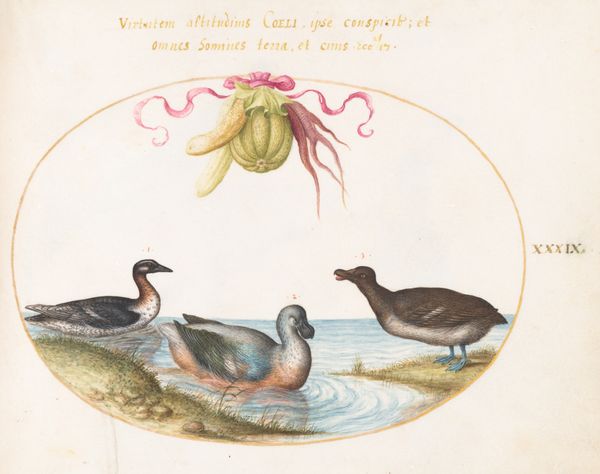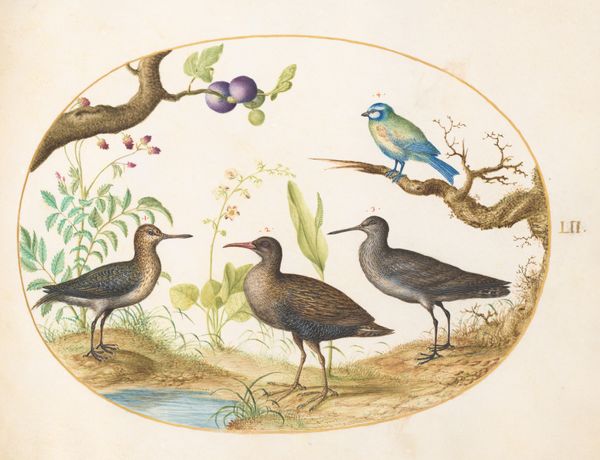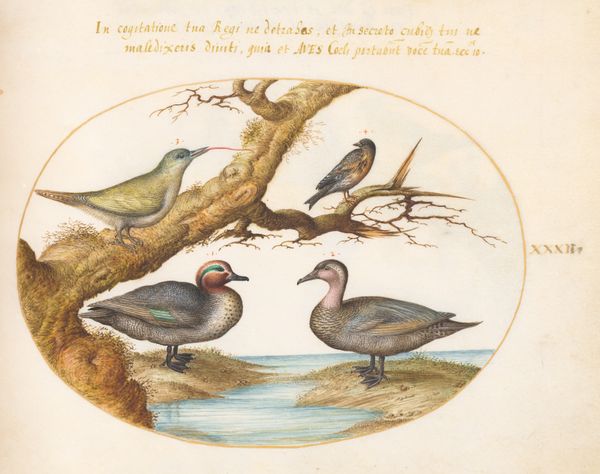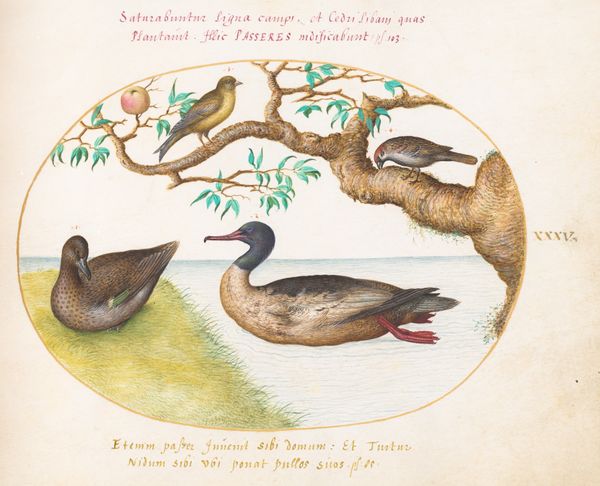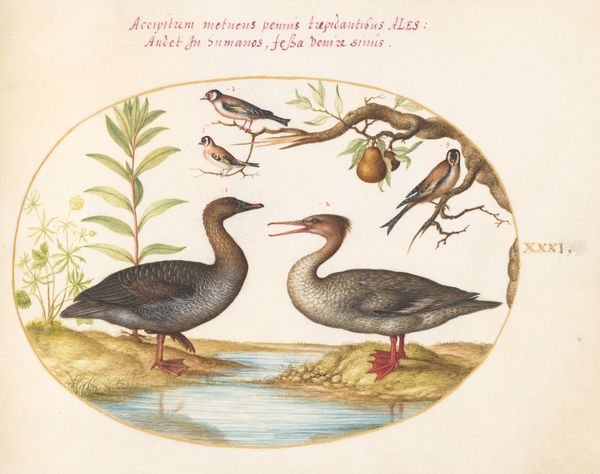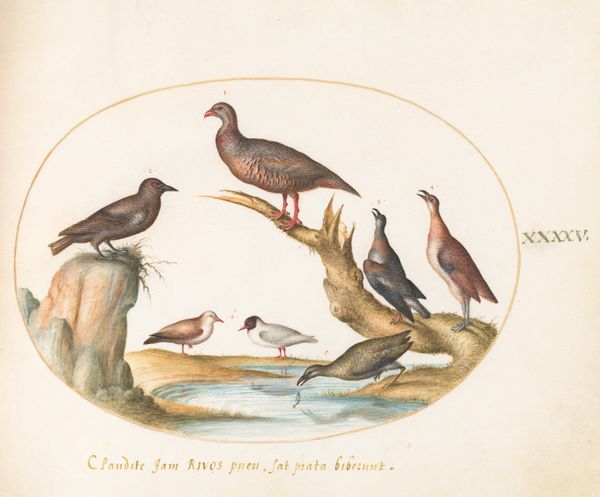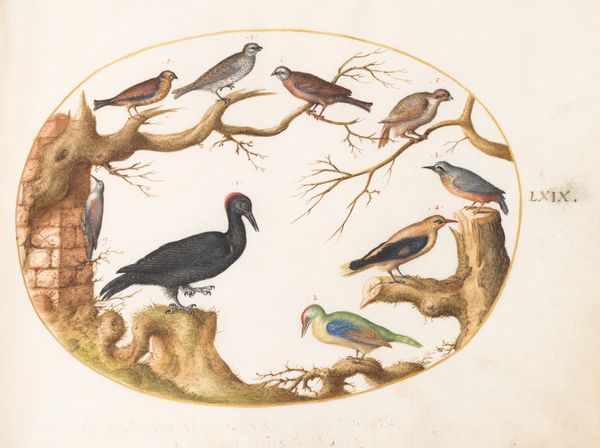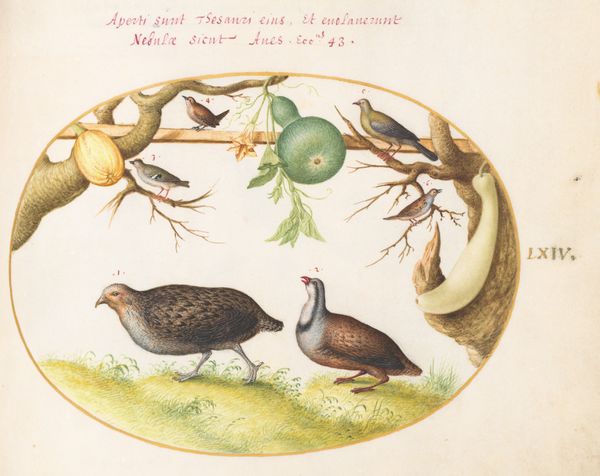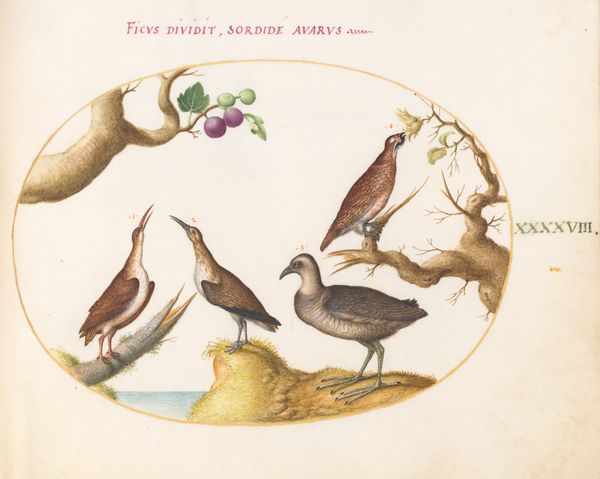
Plate 36: Red-Breasted Merganser, Shoveler, and Two Other Water Birds with Artichokes c. 1575 - 1580
0:00
0:00
drawing, coloured-pencil, watercolor
#
drawing
#
coloured-pencil
#
landscape
#
11_renaissance
#
watercolor
#
coloured pencil
#
watercolor
Dimensions: page size (approximate): 14.3 x 18.4 cm (5 5/8 x 7 1/4 in.)
Copyright: National Gallery of Art: CC0 1.0
Curator: Looking at "Plate 36: Red-Breasted Merganser, Shoveler, and Two Other Water Birds with Artichokes", what strikes you immediately? Editor: The overall effect is serene, almost scientifically detached, and yet those artichokes hovering above inject a strangely surreal quality. Curator: That duality is intriguing. Joris Hoefnagel created this piece using watercolor and colored pencil around 1575-1580. As a natural history illustration, how do you see it engaging with its historical context? Editor: Well, it comes at a fascinating point in the shift of art patrons and power dynamics. Think about the emerging bourgeois class eager to display intellectual and, implicitly, colonial authority through such precise representations of the natural world. It speaks volumes about the socio-political position art had. Curator: I agree. And we see the merging of scientific documentation and artistic interpretation here. Each bird is meticulously rendered. How do these hyperrealistic elements serve broader narratives, perhaps regarding gender or power dynamics? Editor: The piece itself could be critiqued as objectifying these natural beings—they are classified, viewed under a taxonomic lens, reinforcing a human-centric worldview, which is what patriarchal structures have always supported. Curator: It becomes a power play enacted on canvas, and it speaks of that crucial moment in Europe when nature became not just sustenance but also an object to study and colonize, I think. Editor: Indeed. Ultimately, analyzing these works reminds us that representations of nature are not neutral. They participate in and often reinforce particular structures. It provides such important social, economic and environmental critique about current debates on identity. Curator: Exactly. They become a vital instrument in dissecting power structures—and understanding their legacies today.
Comments
No comments
Be the first to comment and join the conversation on the ultimate creative platform.

